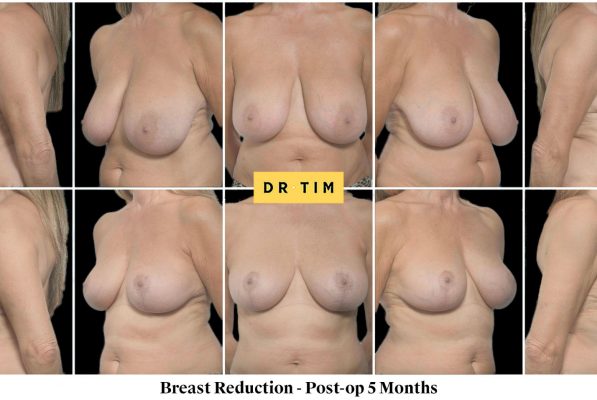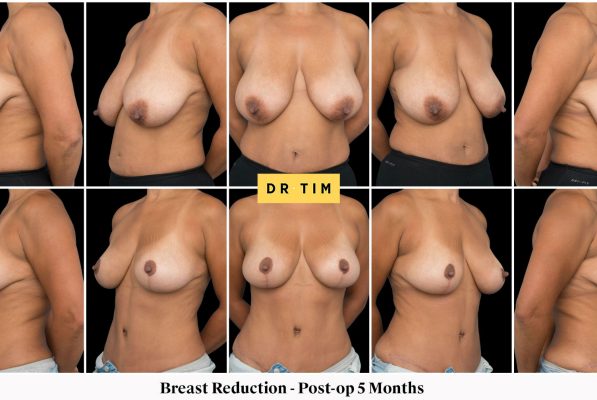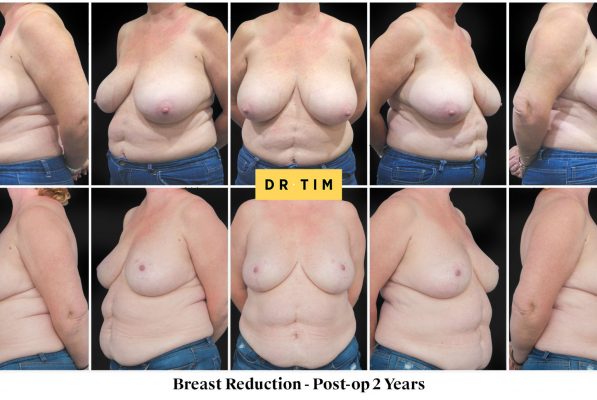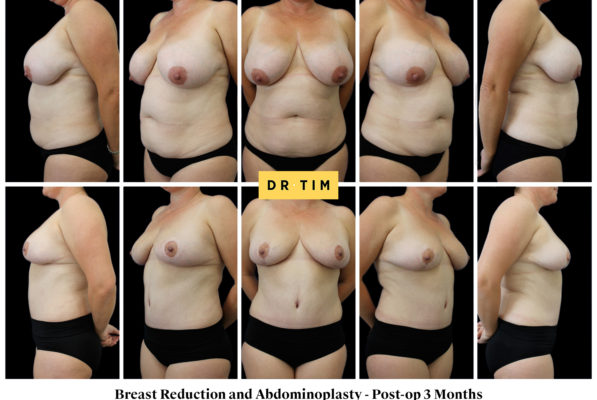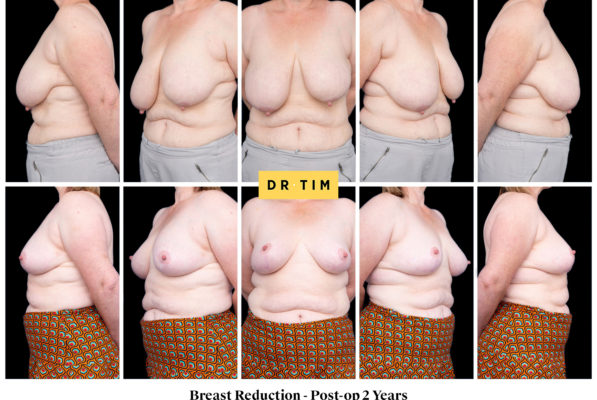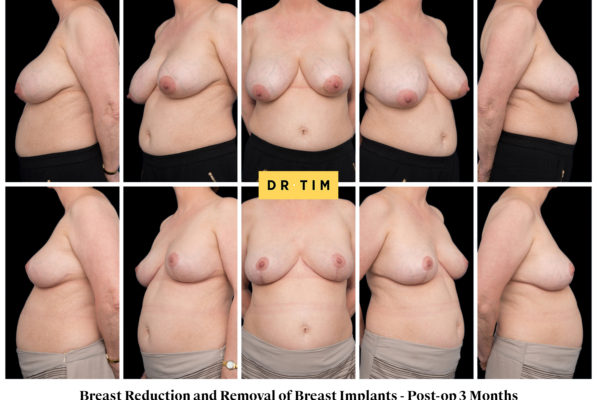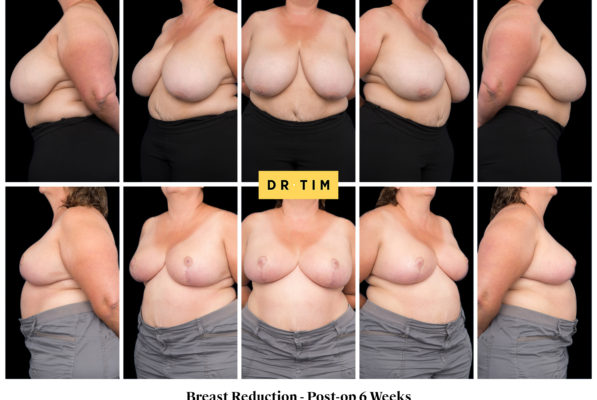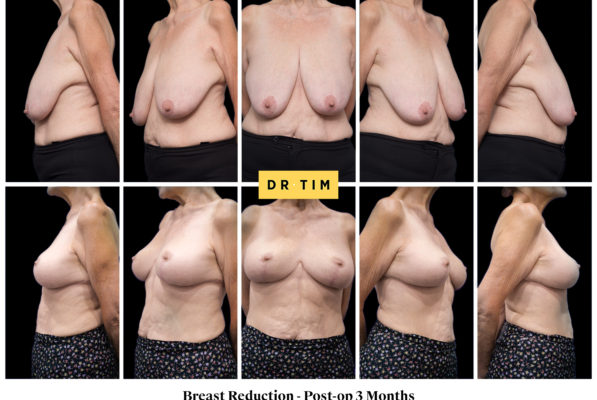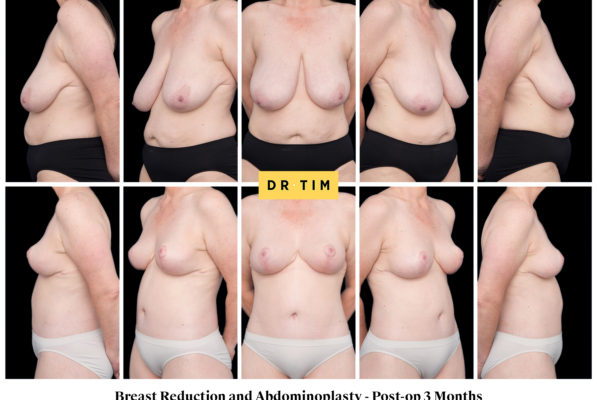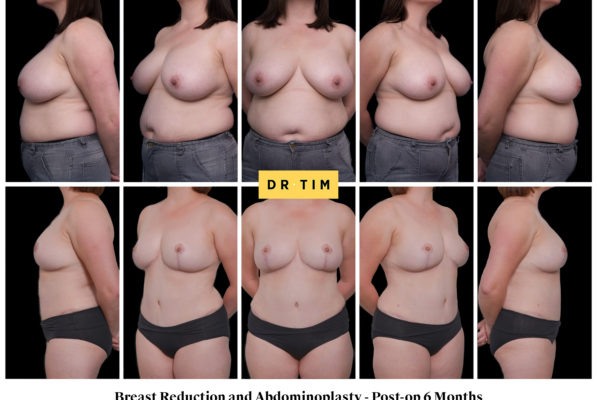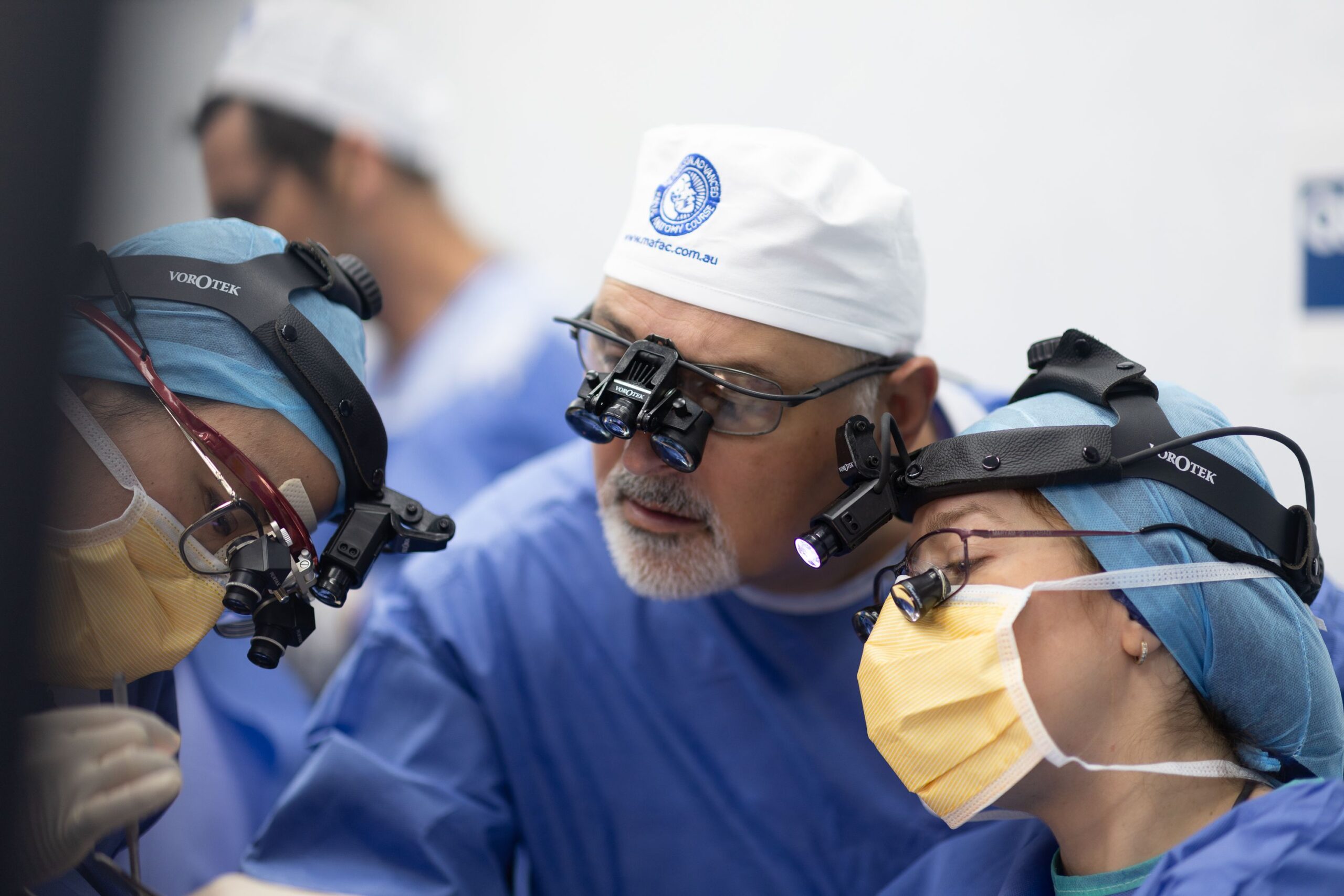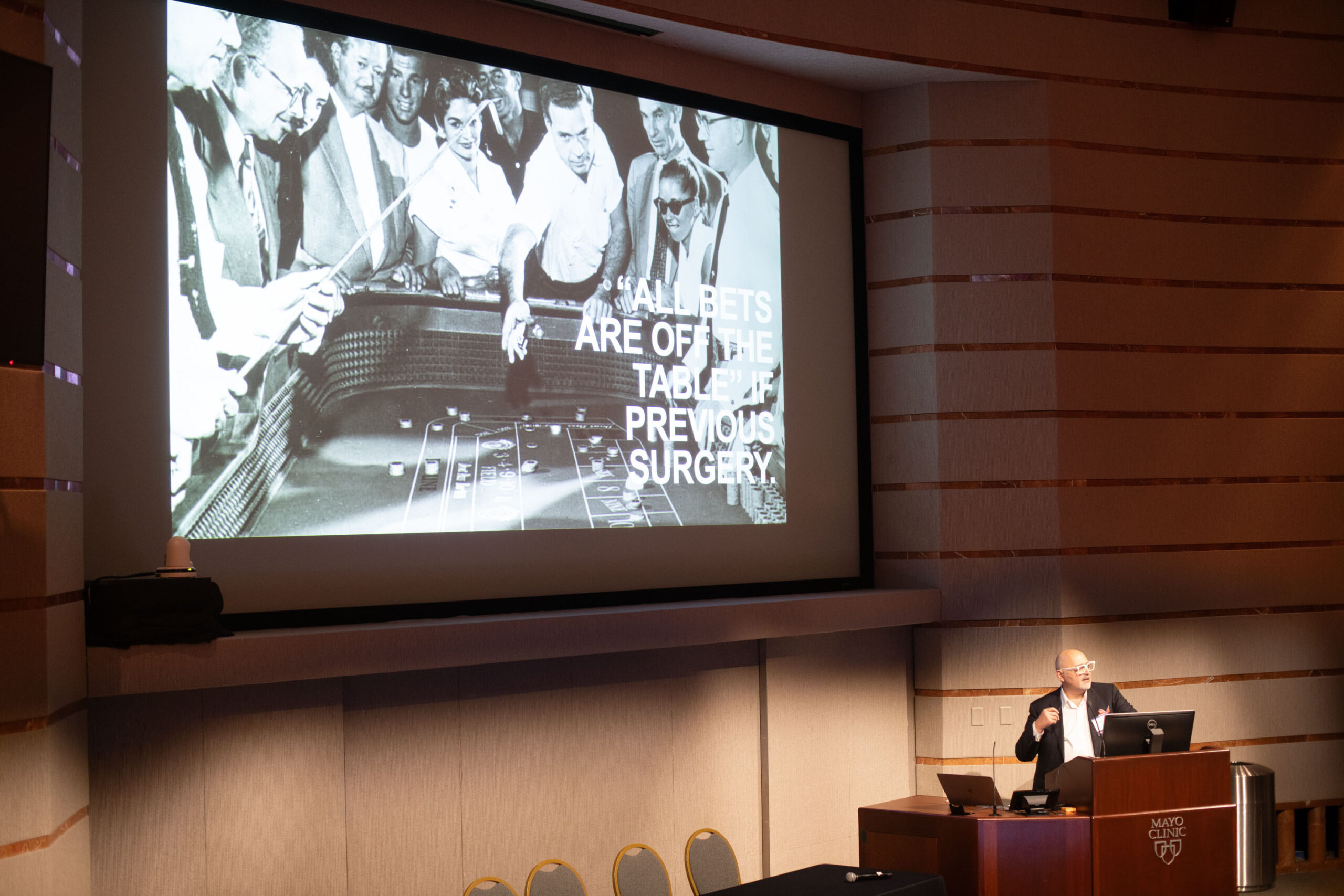Breast Reduction (Reduction Mammaplasty) in Sydney
Technical Explanation of the Procedure
Breast reduction, or reduction mammaplasty, is a surgical procedure designed to reduce the size and weight of overly large breasts, alleviating physical discomfort and improving body proportion. This procedure involves the removal of excess breast tissue, fat, and skin to achieve a more balanced, proportional breast size. It can also address associated concerns such as neck pain, back pain, shoulder grooves from bra straps, and skin irritation under the breasts.
The procedure often includes the reshaping of the breast mound and repositioning the nipple and areola for a natural, youthful appearance. Techniques may vary depending on the individual’s anatomy, the extent of reduction, and personal goals, but the most common methods include:
- Anchor or Inverted-T Incision: Best for significant reductions, involving an incision around the areola, vertically down to the breast crease, and along the crease.
- Vertical or Lollipop Incision: Suitable for moderate reductions, with an incision around the areola and vertically to the breast crease.
- Liposuction-Only Reduction: Used for minor reductions or to remove excess fat in specific areas, such as the sides of the breasts.
Quick Facts About Breast Reduction
- Procedure Duration: 2–4 hours.
- Anaesthesia: General anaesthesia.
- Hospital Stay: Day procedure or overnight stay.
- Results: Immediate improvement in size and shape; final results visible after the swelling subsides (3–6 months).
- Longevity: Permanent, although weight changes, pregnancy, and ageing may affect results.
- Best Candidates: Individuals with large, heavy breasts causing physical discomfort or self-consciousness who are in good overall health.
What to Expect
Before Surgery:
Your consultation with Dr. Tim thoroughly evaluates your breast anatomy, skin quality, and goals. You’ll discuss the best surgical approach to achieve your desired outcome. Pre-operative instructions will be provided, such as avoiding certain medications and fasting before surgery.
During Surgery:
The procedure is performed under general anaesthesia in a fully accredited surgical facility. Incisions are carefully placed according to the selected technique. Excess tissue, fat, and skin are removed, and the remaining tissue is reshaped for a lifted, proportionate appearance. The nipple and areola are repositioned for aesthetic balance. Once complete, the incisions are closed with sutures, and dressings or a surgical bra are applied for support.
After Surgery:
During the initial healing phase, you may experience mild swelling, bruising, and discomfort, which are normal. Dr. Tim will schedule follow-up appointments to monitor your recovery and ensure optimal results.
Risks
While breast reduction is generally safe, potential risks include:
- Infection or delayed wound healing.
- Changes in nipple or breast sensation (temporary or permanent).
- Scarring, which typically fades over time but varies by individual.
- Asymmetry or dissatisfaction with aesthetic results.
- Rare complications, such as blood clots or anaesthesia-related issues.
Recovery Tips
- Follow Post-Operative Instructions: Adhere to Dr. Tim’s guidelines for a smooth recovery.
- Wear a Supportive Bra: A surgical bra or compression garment reduces swelling and supports healing.
- Avoid Strenuous Activities: Refrain from heavy lifting, upper body exercises, or strenuous activities for 4–6 weeks.
- Sleep on Your Back: To avoid putting pressure on your chest, sleep on your back with pillows for support.
- Manage Pain and Swelling: Use prescribed pain relief and cold compresses as needed.
- Scar Care: Follow scar management recommendations to promote healing and minimise visibility over time.
This content is suitable for an 18+/adult audience only
These photos are of consented patients of this clinic/medical practitioner and have not been altered or digitally enhanced.
Outcomes shown are only relevant for this patient and do not necessarily reflect the results other patients may experience, as results may vary due to many factors including the individual’s genetics, diet and exercise.
Click on the images below to enlarge



